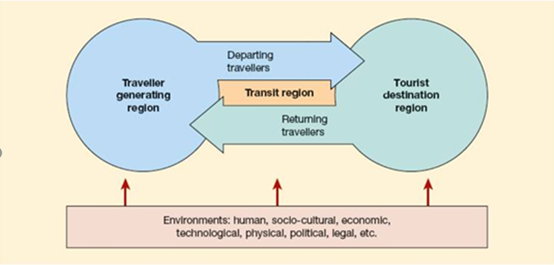As soon as I first saw the name of the course Roadmap to Tourism and Hospitality Industry, my curiosity was aroused because I was a freshman in International Tourism Management in SAMK from China. In China, hospitality management was often translated into hotel management, so the translation made me confused.
During the first months of tourism studies, I kept exploring this professional course and following the “road signs” in the lectures and after class, and now I can say I understand the definition of the tourism and hospitality industry.
Firstly, my many original definitions have been refreshed. Tourism is a social, cultural and economic phenomenon related to the movement of people to places outside their usual place of residence, pleasure being the usual motivation (source: UNWTO).
Tourist is a visitor taking a trip to a main destination outside his/her usual environment, for less than a year, for any main purpose (business, leisure or other personal purpose) other than to be employed (source: European Commission). Tourist’s purposes become the basis of classification of tourism products and the tourism push factors.
Furthermore, I understand that “hospitality is the friendly and generous reception and entertainment of guests, visitors, or strangers” (source: Wikipedia). Hospitality management includes hotel management and plays an important role in tourism.
Several important concepts are used to further explain the definitions, for example the tourism system, and types of tourism product such as food tourism, ecotourism, health tourism, etc. As industries tourism and hospitality produce economic, socio-cultural and environmental impacts and have been affected by the Covid-19 epidemic.

Secondly, in the framework of tourism and hospitality, restaurant industry, accommodation industry and passenger transportation are common pillars. In the hotel industry, demand is seasonal and safety issues are difficult to deal with. Air, water, and land transports directly affect the volume of tourists. Cruise is both travel and transportation. It is worth emphasizing that travel agencies and tour operators in the chain of distribution promote the development of tourism.

We used a lot of case analysis in class with Finnish tourism and hospitality analyzed as core cases. Finland’s unique pull factors such as visiting the home of Santa Claus, sleigh ride pulled by huskies or reindeer, sleeping in igloos, saunas and Moomins, stand out from competitors. Pori is renowned for natural attractions and cultural event such as Yyteri and International Jazz Festival.
Tourism carrying capacity is used for measuring the maximum number of tourists at the same time. Tourism accounts such as tourism expenditure and tourism receipts enable the generation of tourism economic data.
During the course I have also done a video presenting tourism in my home country China (you can see it here).
Of course, the first year course Roadmap to Tourism and Hospitality Industry only plays a guiding part for us students. I have interest in continuing to research and read relevant books so as to be even more professional in the future.
Text: Yao Jun, second year International Tourism Management student


